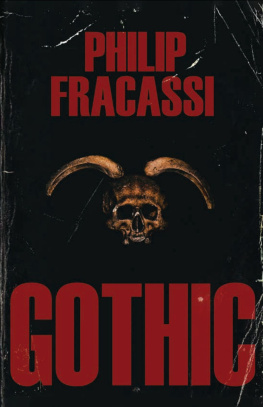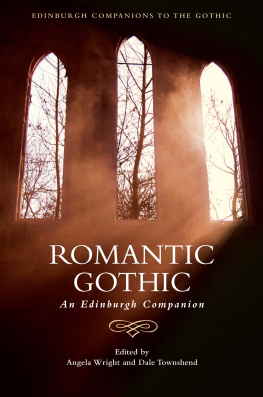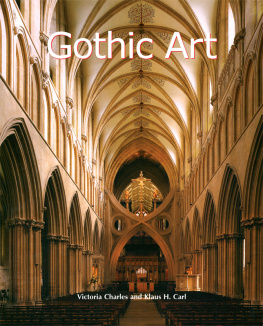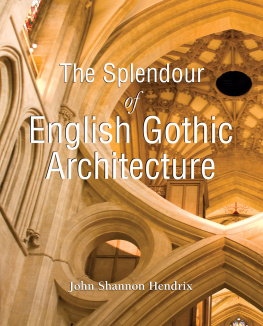Scott - The Gothic Enterprise
Here you can read online Scott - The Gothic Enterprise full text of the book (entire story) in english for free. Download pdf and epub, get meaning, cover and reviews about this ebook. year: 2011;2012, publisher: University of California Press, genre: Romance novel. Description of the work, (preface) as well as reviews are available. Best literature library LitArk.com created for fans of good reading and offers a wide selection of genres:
Romance novel
Science fiction
Adventure
Detective
Science
History
Home and family
Prose
Art
Politics
Computer
Non-fiction
Religion
Business
Children
Humor
Choose a favorite category and find really read worthwhile books. Enjoy immersion in the world of imagination, feel the emotions of the characters or learn something new for yourself, make an fascinating discovery.

- Book:The Gothic Enterprise
- Author:
- Publisher:University of California Press
- Genre:
- Year:2011;2012
- Rating:3 / 5
- Favourites:Add to favourites
- Your mark:
- 60
- 1
- 2
- 3
- 4
- 5
The Gothic Enterprise: summary, description and annotation
We offer to read an annotation, description, summary or preface (depends on what the author of the book "The Gothic Enterprise" wrote himself). If you haven't found the necessary information about the book — write in the comments, we will try to find it.
The Gothic Enterprise — read online for free the complete book (whole text) full work
Below is the text of the book, divided by pages. System saving the place of the last page read, allows you to conveniently read the book "The Gothic Enterprise" online for free, without having to search again every time where you left off. Put a bookmark, and you can go to the page where you finished reading at any time.
Font size:
Interval:
Bookmark:
The Gothic Enterprise
A Guide to Understanding the Medieval Cathedral
WITH A NEW PREFACE

ROBERT A. SCOTT

University of California Press, one of the most distinguished university presses in the United States, enriches lives around the world by advancing scholarship in the humanities, social sciences, and natural sciences. Its activities are supported by the UC Press Foundation and by philanthropic contributions from individuals and institutions. For more information, visit www.ucpress.edu .
University of California Press
Berkeley and Los Angeles, California
University of California Press, Ltd.
London, England
First paperback printing 2005
2003, 2011 by The Regents of the University of California
ISBN: 978-0-520-26999-6 (pbk. : alk. paper)
Title page: Lantern tower of Rouen Cathedral
(photo by Robert Scott).
The Library of Congress has cataloged an earlier edition as follows:
Library of Congress Cataloging-in-Publication Data
Scott, Robert A.
The Gothic enterprise : a guide to understanding the Medieval cathedral / Robert A. Scott.
p. cm.
Includes bibliographical references and index.
ISBN 978-0-520-24680-5 (pbk. : alk. paper)
1. Architecture, Gothic. 2. Cathedrals. I. Title.
NA440.S425 2003
726.60902dc21
2003007856
Manufactured in the United States of America
20 19 18 17 16 15 14 13 12 11
10 9 8 7 6 5 4 3 2 1
The paper used in this publication meets the minimum requirements of ANSI/NISO Z39.48-1992 (R 1997)
(Permanence of Paper).
To Peter Rothwell
with thanks for having made this project possible

The Gothic Enterprise was first published in 2003. I wrote it with an audience in mind of those nonspecialist enthusiasts who visit and read about Europes great medieval Gothic cathedrals, and I have heard from scores of such readers in the years since. My inspiration grew out of experiences I had while teaching courses about cathedrals in the Stanford Continuing Studies Program; leading tours of some of the great churches throughout the south and west of England with my wife, Julia Fremon; and paying visits with her to famous cathedrals elsewhere in England and Wales, France, Sweden, Spain, and cities in eastern and central Europe. In connection with these visits we read some of the standard histories about each of the buildings we were about to see, later often supplemented by the excellent guidebooks that cathedral bookshops sell. We find these latter sources quite informative, and they have always added greatly to our enjoyment of the experience of visiting each cathedral.
That said, the available sources do not always answer all of the questions that people who have joined our tours ask themselves while visiting a Chartres, a Canterbury, a Notre Dame, a Westminster Abbey, a Salisbury, or any of the other hundreds of such great churches of western and central Europe. While standing in awe of their astounding beauty, one cannot help but wonder how people living under the unforgiving conditions of daily life during the Middle Ages were able to initiate and ultimately complete such magnificent and audacious architectural works. What inspired them to want to do this? Why would anyone consider it a worthwhile use of the scarce liquid capital available at the time to invest so much of it in buildings that effectively did not produce anything?
Additional questions occur to the nonspecialists of our acquaintance, some so elementary that they may even feel uneasy asking about matters that specialists largely take for granted as unproblematic. Though most of us certainly recognize a Gothic cathedral when we see one, we are less sure we understand what sort of cultural artifact the Gothic cathedral actually is. Who used it, and for what? Why was it designed and laid out as it was? Throughout human history, people have worshipped gods, but why did those living during the Middle Ages believe they needed such grand spaces in which to do so? It is understandable that the devout might wish to set aside special places in which to venerate God, but why not simply mark off the ground around an open space, designate it as sacred, and pray there? What reason could there be for enclosing such spaces with soaring arches and adorned vaults? Why was interior light so important, particularly when sunlight was so readily and freely available outdoors? This book answers these and related questions, providing the interested nonspecialist with a basic guide to understanding the medieval Gothic cathedral as a type of cultural object.
I wrote The Gothic Enterprise with a second purpose in mind, prompted in part by the presentation of medieval cathedrals and great abbey churches in much of the existing scholarly work. Books about the great cathedral churches at, say, Wells, Amiens, Beauvais, Winchester, Durham, Canterbury, or Notre Dame recount the histories of these great churches one building at a time, as it were. Other studies analyze in impressive detail individual components of single cathedrals or other great churchestheir chapels, tombs, stained glass windows, capitals, vaults, buttresses, altars, choir screens, towers and spires, statuary, cloisters, graveyards, undercrofts, and so on. These are useful approaches to advancing knowledge about the building of specific Gothic cathedrals, but they can leave the nonspecialist reader (and occasionally the trained specialist) with the misimpression that each individual cathedral or great abbey church is a sui generis creation. They also imply that one can fully understand such a structure without reference to others that were being built at the same time. Too often, while recounting the histories of individual cathedrals and great churches, scholarly works mention in passing only the scantest details about the larger social, political, religious, and cultural contexts out of which the impetus to build each one grew.
The written accounts of Salisbury Cathedral that I reference throughout this book illustrate this point. They present in impressive detail information about all aspects of this particular cathedral: who the presiding bishop was when work began; the names of successive master builders who oversaw its construction; the phases and dates of the building campaigns that led to its completion; how it was built; the volume of stone, lead, timber, and stained glass that went into its creation; where the raw materials came from and how they were transported to the site; and so on. But mentioned only in passing (and sometimes not at all) is the fact that during the period when Salisbury Cathedral was being built, 1220 to circa 1300, important and equally ambitious building campaigns were simultaneously under way at Westminster Abbey, Winchester, Wells, Glastonbury Abbey, Canterbury, Gloucester, and other locations near and far. All of these projects were part of a large social movement that swept across western and central Europe beginning in the third decade of the twelfth century and continuing in fits and starts for the next four hundred years. I call this movement the Gothic enterprise and argue that it has much to tell us about why Salisbury or any other Gothic cathedral was built in the first place, and how. I do not wish to imply that these facts are unknown to those who have written the standard histories of Salisbury, but only to say that developments in neighboring cathedrals at the time form a part of the taken-for-granted canvas on which they paint their picture of this particular great church. My second main intention in writing this book, then, has been to bring to the foreground of our thinking about gothic cathedrals the larger context in which they were built and to make that context integral to the story of each one.
Next pageFont size:
Interval:
Bookmark:
Similar books «The Gothic Enterprise»
Look at similar books to The Gothic Enterprise. We have selected literature similar in name and meaning in the hope of providing readers with more options to find new, interesting, not yet read works.
Discussion, reviews of the book The Gothic Enterprise and just readers' own opinions. Leave your comments, write what you think about the work, its meaning or the main characters. Specify what exactly you liked and what you didn't like, and why you think so.













